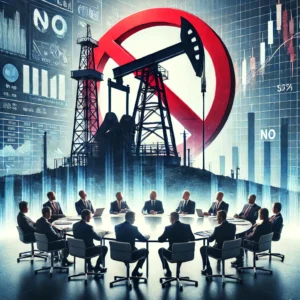
When you make purchases through our links we may earn a small commission.

Photo Credit: Strvnge Films
Put It On Your Wall: CanvasOnDemand.com
Support thesmokingchair.com through Patreon.
When we think of combustion, we often associate it with fire, engines, and the release of energy. However, combustion also plays a crucial role in the Earth’s climate system, contributing to the warming of the atmosphere. To comprehend how the products of combustion lead to warmer air, we need to delve into the science behind this process.
Combustion Basics
Combustion is a chemical reaction that occurs between a fuel and an oxidizing agent, typically oxygen. The result of this reaction is the release of energy, often in the form of heat and light. Common examples of combustion include the burning of fossil fuels like coal, oil, and natural gas for energy production, as well as the combustion processes within our vehicles.
The Greenhouse Effect
The key to understanding how combustion affects the Earth’s climate lies in the greenhouse effect. Earth’s atmosphere contains gases known as greenhouse gases, such as carbon dioxide (CO2), methane (CH4), and water vapor. These gases have the unique ability to trap heat from the sun, preventing it from escaping back into space.
When we burn fossil fuels, we release large amounts of carbon dioxide into the atmosphere. This additional CO2 enhances the natural greenhouse effect, creating a thicker blanket that traps more heat. As a result, the Earth’s surface and lower atmosphere experience a net gain in energy, leading to an increase in temperature.
Water Vapor Feedback
Water vapor, while not directly produced by combustion, plays a significant role in amplifying the warming effect. As the atmosphere warms due to increased greenhouse gases, it can hold more water vapor. Since water vapor is also a potent greenhouse gas, this creates a positive feedback loop—warming leads to more water vapor, which in turn contributes to additional warming.
Particulate Matter and Albedo
In addition to greenhouse gases, combustion can release particulate matter into the atmosphere. While some particles may have a cooling effect by reflecting sunlight back into space, others, such as black carbon (soot), absorb sunlight and contribute to warming. Moreover, when these particles settle on snow and ice, they reduce the surface albedo, causing these surfaces to absorb more sunlight and further intensifying warming.
Global Impact
The warming effect of combustion products has far-reaching consequences for our planet. Rising temperatures can lead to changes in weather patterns, sea level rise, and disruptions to ecosystems. Moreover, the increased frequency and intensity of extreme weather events, such as heatwaves, storms, and droughts, can be attributed, in part, to the enhanced greenhouse effect caused by human activities like combustion.
The Last Word
In summary, the products of combustion, particularly the release of greenhouse gases like carbon dioxide, contribute to the warming of the Earth’s atmosphere. This warming effect is a result of the enhanced greenhouse effect, which traps more heat and alters the planet’s climate. Understanding the science behind combustion and its impact on the environment is crucial as we seek sustainable alternatives and strive to mitigate the adverse effects of human activities on our planet.
You’ll get more articles like this – and our favorite promotional offers delivered straight to your inbox.
By submitting this form you agree to our terms and conditions. You can unsubscribe at any time.

🔥 Transparent Sheer Tops Try-On Haul | Camila Elle 🔥

Video: Mira Shape Knitted TRANSPARENT Try-On. YES or NO?


The D Files: Haley’s Role Model

The Short-Term Appeal and Long-Term Risks of MAGA Policies

To ‘Drill, Baby, Drill’ Big Oil Is Saying ‘No, Thanks’

Video: Mira Shape Knitted TRANSPARENT Try-On. YES or NO?

🔥 Transparent Sheer Tops Try-On Haul | Camila Elle 🔥


Video: Mira Shape Knitted TRANSPARENT Try-On. YES or NO?

To ‘Drill, Baby, Drill’ Big Oil Is Saying ‘No, Thanks’

















